Gates Emmert’s hands were tinted orange as she pulled a bandana out of her pocket to wipe the sweat from her brow. She beamed as she explained what her classmates were looking for in the red clay of an empty lot between preserved historic buildings in Old Salem.
“It’s not every day that you get to do archaeology in your backyard!” Emmert said. She and her classmates were clearly in their element as they brushed aside dirt and dust to reveal a brick foundation about six inches beneath the grassy surface.
The group of UNC Greensboro students were tasked to uncover evidence of a more than 200-year-old pottery kiln as part of their Field Methods of Archaeology and Analysis of Archaeological Data classes under lecturer Dr. Geoffrey Hughes. Hughes speculated that this brickwork might be part of the kiln or a related structure.
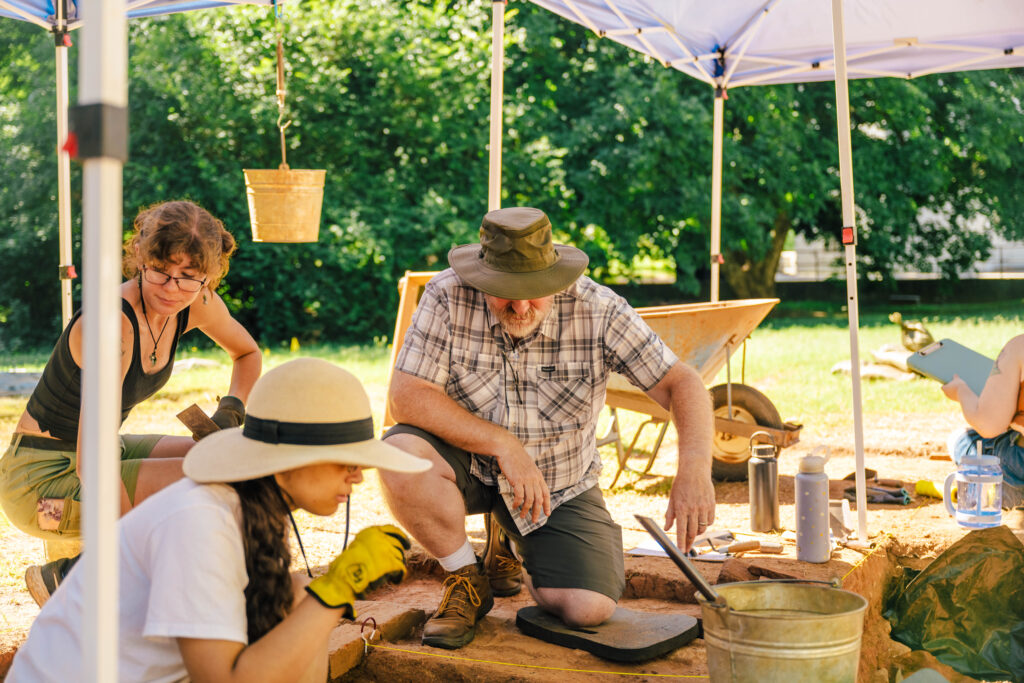

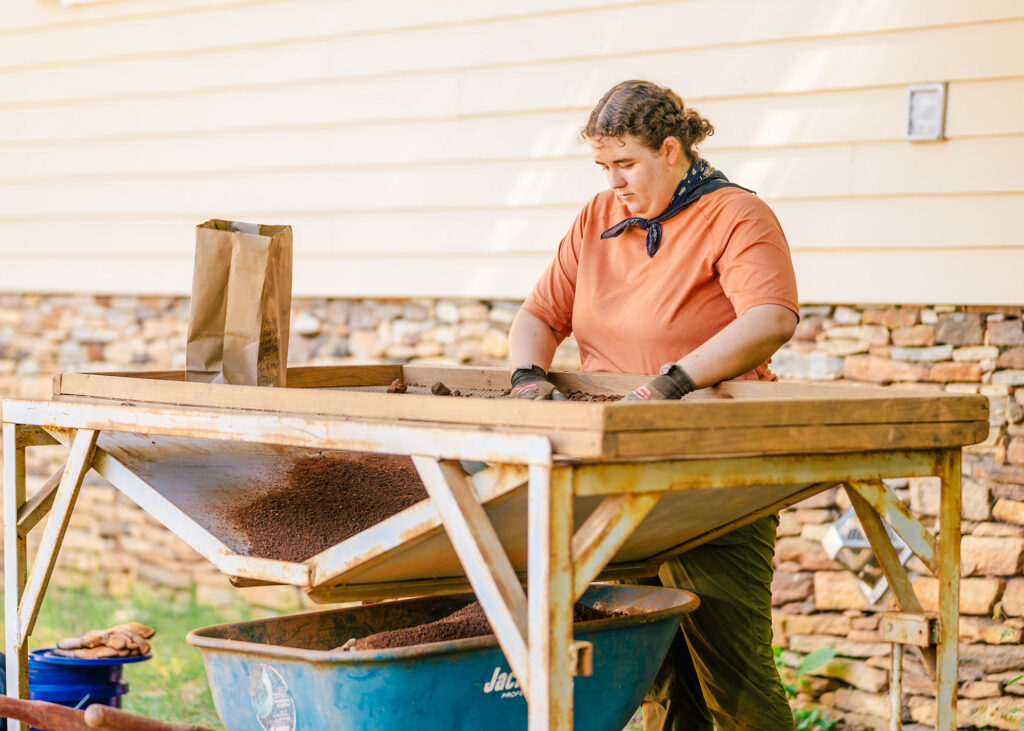
Sifting Through Evidence of the Past
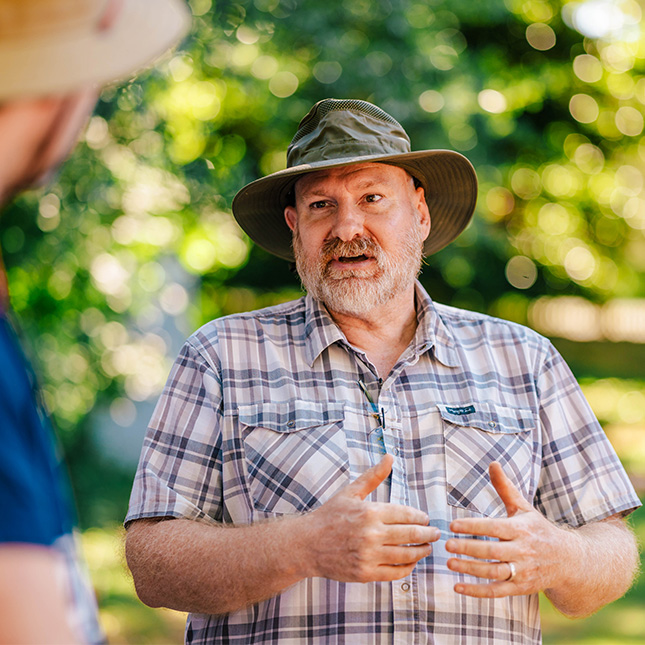
Hughes has been studying the Moravian settlements since the 1990s: “One of the things that makes the Moravians’ Wachovia settlement so fascinating to me is the fact that you have this planned religious community in the back country of North Carolina, which is very connected to an emerging world system.”
From 2016 to 2018, Hughes led excavations in Old Salem that found evidence that an experimental pottery kiln had been built in 1793 and used until 1805. If excavators could dig deeper and find examples of pottery that was made here, archaeologists could determine advancements in the potters’ tools and craftsmanship that kept their community relevant in the early 19th century. It was the perfect project for a field school project for Hughes’ UNCG students.
“The main takeaway from this dig has been the amount of information that you can find out about people in the past, just from looking at little artifacts,” said Katherine Rock, a fourth-year student with plans to become an archaeological technician after graduation. “The emotional connection is extremely important. Being able to walk in the same place that somebody did 200 years ago is pretty fascinating.”
Digging for Career Experience
The five-week dig was a partnership between UNCG and Old Salem Museums and Gardens. As part of the partnership, Old Salem set aside space in their visitor center for an archaeology lab. At the end of each day, the students brought the artifacts they found to the lab for cleaning and processing.
“There’s only so much you can learn in the classroom,” admitted Hughes. “Field schools are essential for any future archaeologist. What we’re doing here is providing our students with career-ready skills, so that as soon as they graduate, they can go on to become entry-level archaeologists.”
In addition to learning how to excavate the site and catalog the artifacts, the students were also able to engage with visitors about what they found and what the findings told them about the early Moravian settlers.
As a fourth-year student who would like to work in a natural history museum or Library of Congress after graduation, Emmert says making inferences based on traits of artifacts they uncovered was particularly interesting: “We have found a lot of variety in glazes and colors and we can see that the potters’ techniques changed over time.”
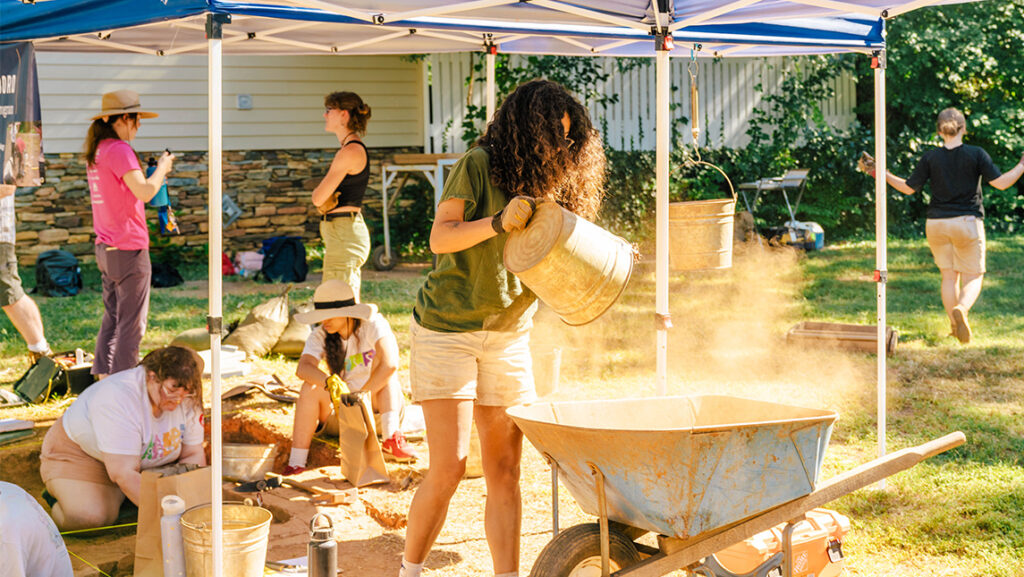
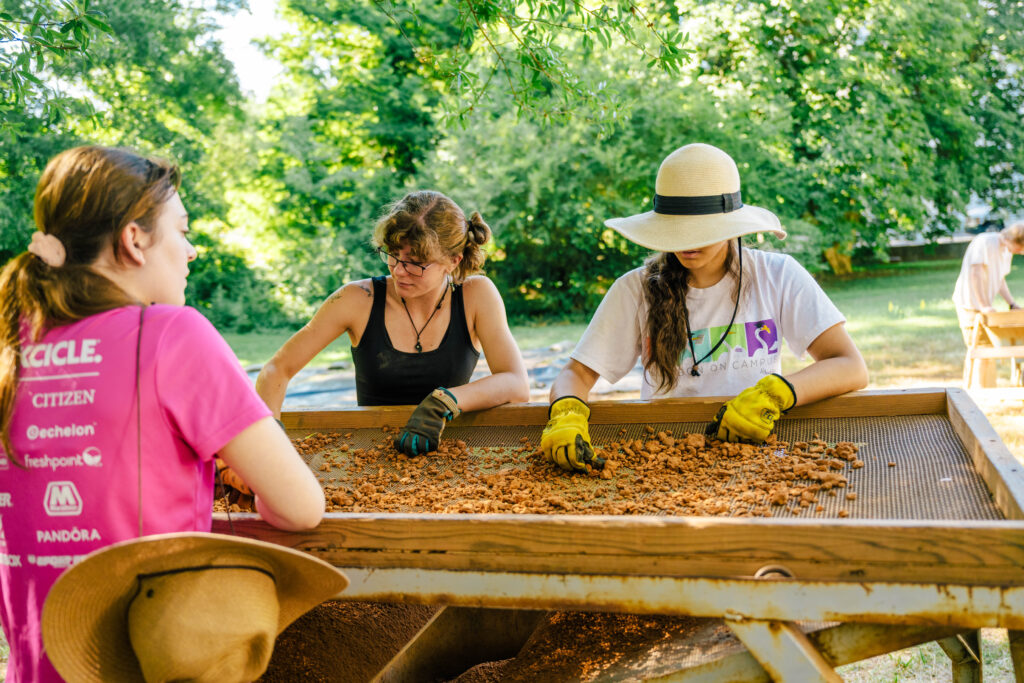

A Partnership of Historic Proportions
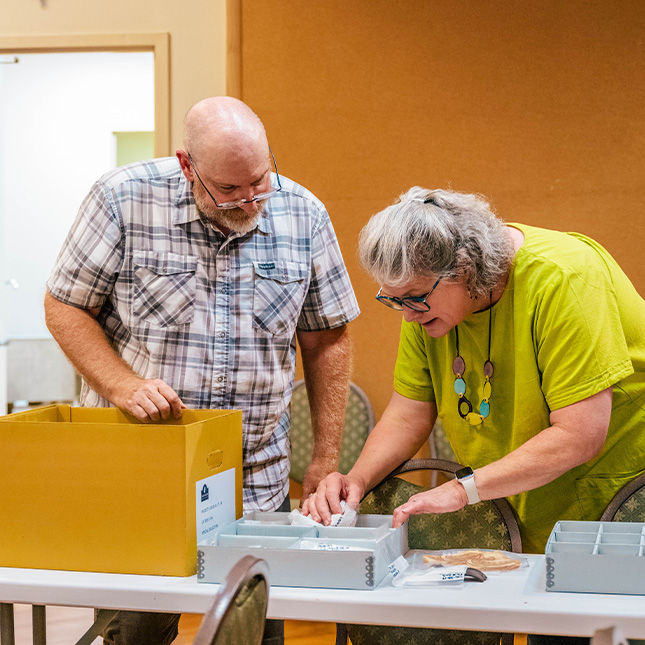
Although the work sometimes felt slow and tedious, Hughes was pleased with the field school’s findings. “Old Salem will be able to use our artifacts to talk to the public about the importance of Moravian history here,” he said. “We’re finding evidence of just how technologically advanced the Moravians really were.”
Johanna Brown, Old Salem’s Chief Curator and Director of Collections agreed wholeheartedly. “We can learn so much from the material culture that we excavate, so having UNCG students here to do this work enables our research to continue even though Old Salem doesn’t have a full-time archaeologist,” she said. “It is critically important to our understanding of Moravian history and ceramic traditions in America as a whole.”
For the student archaeologists, uncovering North Carolina history and participating in Old Salem’s preservation efforts was extremely rewarding.
“Participating in this field school has really made me hone in on what I want to do,” said Rock. “This is my dream job!”
Story by Becky Deakins, University Communications.
Photos and video by Sean Norona, Grant Gilliard, and David Lee Row, University Communications.




